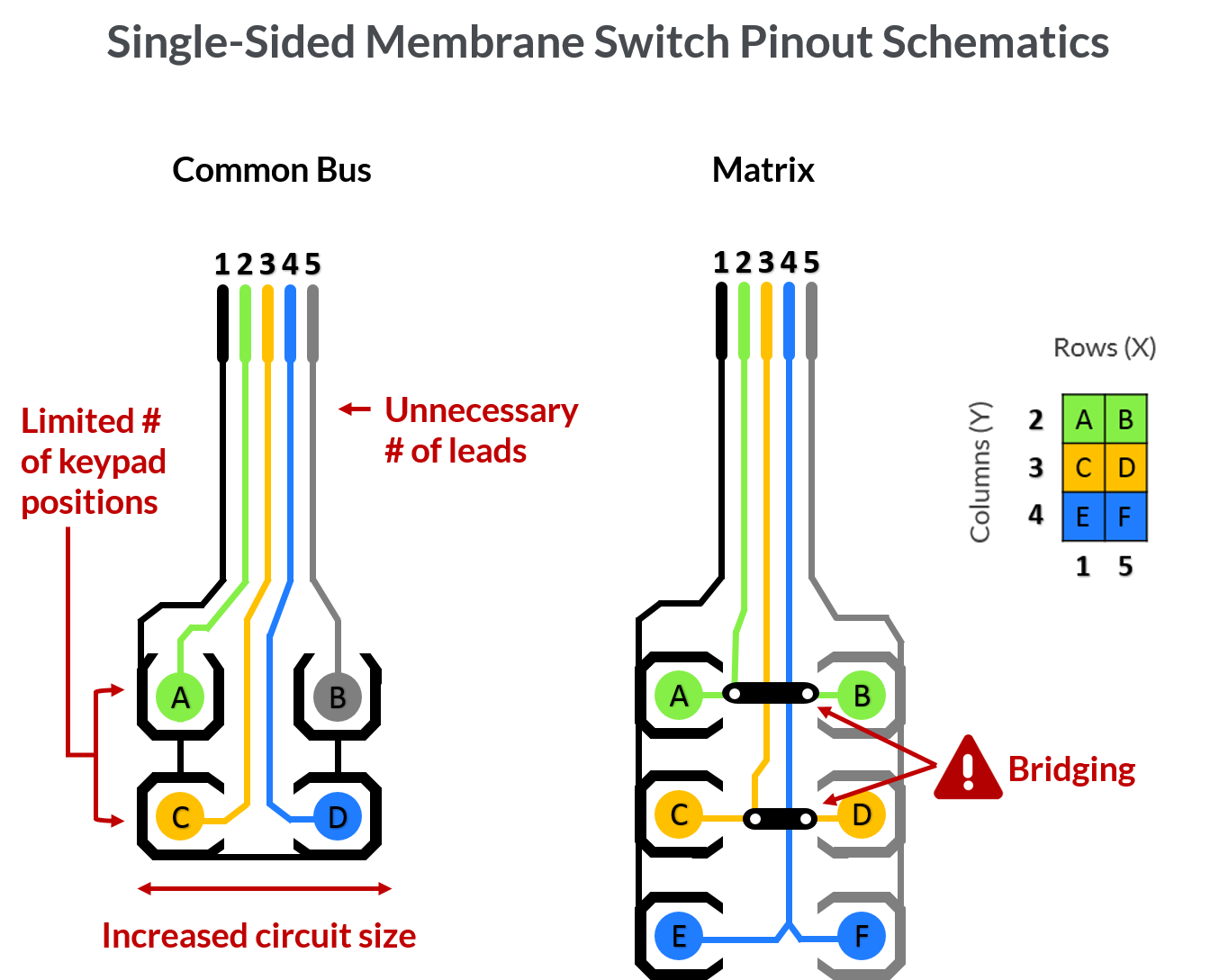Discover Various Sorts Of Membrane Switch Technologies for Your Demands
Discover Various Sorts Of Membrane Switch Technologies for Your Demands
Blog Article
Exactly How Membrane Changes Add To the Resilience of Electronic Control Panels
Membrane layer switches play an important function in boosting the durability of digital control panels, mainly through their multi-layered construction which offers reliable defense against environmental variables such as wetness and dust. The absence of relocating components significantly lowers the chance of mechanical failures, making membrane switches perfect for demanding applications.
Interpretation of Membrane Layer Switches

Membrane layer buttons are designed to be thin and light-weight, making them ideal for applications where area is restricted. They can be made in various shapes, sizes, and shades, providing adaptability in design that meets aesthetic and practical demands. Furthermore, membrane switches can incorporate various technologies, such as responsive responses and LED indications, enhancing user experience.
Because of their building and construction, membrane layer buttons are commonly immune to dirt, wetness, and basic wear, adding to their durability in requiring settings. Their smooth layout not just promotes very easy cleansing yet additionally minimizes the risk of mechanical failure, making them a favored selection for producers seeking dependable interface in their digital control panels.
Protection Versus Ecological Variables
The layout of membrane layer changes inherently gives a level of defense versus different environmental factors, which is essential for preserving functionality in challenging conditions - Membrane Switch. These buttons are usually built with layers of adaptable materials that protect inner components from wetness, dust, and contaminants. By enveloping the wiring, membrane switches lessen the risk of short circuits and deterioration, which can dramatically hinder performance
Moreover, the usage of robust adhesives and sealers throughout manufacturing boosts their resistance to environmental obstacles. Membrane layer buttons can endure direct exposure to chemicals and solvents, making them appropriate for sectors such as food processing and healthcare, where hygiene and sanitation are vital. Their seamless surface area design likewise prevents the buildup of dust and bacteria, assisting in simpler cleansing and maintenance.
Temperature level changes are another environmental concern, and membrane switches are crafted to function successfully across a large range of temperatures (Membrane Switch). This flexibility makes certain that control panels continue to be operational in different setups, from industrial atmospheres to customer electronics
Effect On User Communication
Customer interaction with electronic control panels is dramatically influenced by the style and capability of membrane switches. These switches offer a responsive user interface that boosts the overall user experience, permitting intuitive navigation and control. Their receptive nature makes certain that users receive instant feedback upon activation, which is crucial for jobs needing precision and efficiency.
Additionally, the smooth surface area of membrane changes promotes very easy cleansing and upkeep, advertising customer self-confidence in the integrity of the user interface. This sanitation is particularly important in environments where health is extremely important, such as medical or food handling setups. In addition, the portable and light-weight design of membrane changes contributes to resource the aesthetic appeal of control panels, encouraging customer involvement via a modern and sleek look.
Additionally, the assimilation of aesthetic aspects, such as published icons and backlighting, helps users quickly identify functions, minimizing the finding out curve connected with new tools. As an outcome, users can run tools better, bring about enhanced productivity and fulfillment. In summary, membrane layer buttons play a critical role in enhancing customer interaction by combining capability, aesthetics, and ease of use, inevitably resulting in improved functional efficiency.
Layout Flexibility and Modification
Style flexibility and modification are vital aspects of membrane buttons, allowing suppliers to tailor digital control panels to details applications and user demands. This adaptability enables the combination of various style components, such as colors, graphics, and textures, which can enhance the visual allure and individual engagement of the control panel.
Membrane buttons can be customized in shapes and size, accommodating a wide variety of devices and applications, from industrial equipment to customer electronics. This convenience guarantees that makers can create intuitive interfaces that straighten with customer expectations and functional needs. Additionally, the capability to integrate unique attributes such as official statement backlighting or tactile feedback additionally improves usability, permitting a much more interactive experience.
Additionally, the production process for membrane switches supports the fast prototyping of styles, enabling manufacturers to iterate and fine-tune their principles promptly. This capacity not just accelerates the development timeline but likewise guarantees that the end product satisfies certain useful and visual requirements.

Cost-Effectiveness and Durability
Cost-effectiveness and durability are significant advantages of membrane buttons, making them an eye-catching alternative for manufacturers and end-users alike. These buttons are commonly less costly to create than conventional mechanical switches, primarily as a result of their streamlined manufacturing processes and the lowered variety of components called for. This expense advantage extends not just to preliminary production but also to lasting functional expenses, as membrane layer buttons typically require less maintenance and have a lower failing price.
Furthermore, see this the longevity of membrane layer changes contributes to their total value. Built from durable materials, they are immune to environmental factors such as moisture, dirt, and chemicals, which can cause premature wear in various other switch kinds. The absence of relocating parts minimizes mechanical failing, permitting membrane layer changes to keep functionality over expanded periods.
This sturdiness is particularly valuable in applications needing regular performance under requiring problems, such as medical tools and commercial equipment. Ultimately, the combination of cost-effectiveness and long life makes membrane changes a financially practical option for manufacturers, supplying dependable options that endure the examination of time while optimizing budgetary considerations.
Verdict
In verdict, membrane layer buttons dramatically boost the resilience of digital control panels with their durable construction and protective attributes - Membrane Switch. In general, membrane switches stand for a dependable and cost-effective option for boosting the durability and performance of electronic control systems.
Report this page